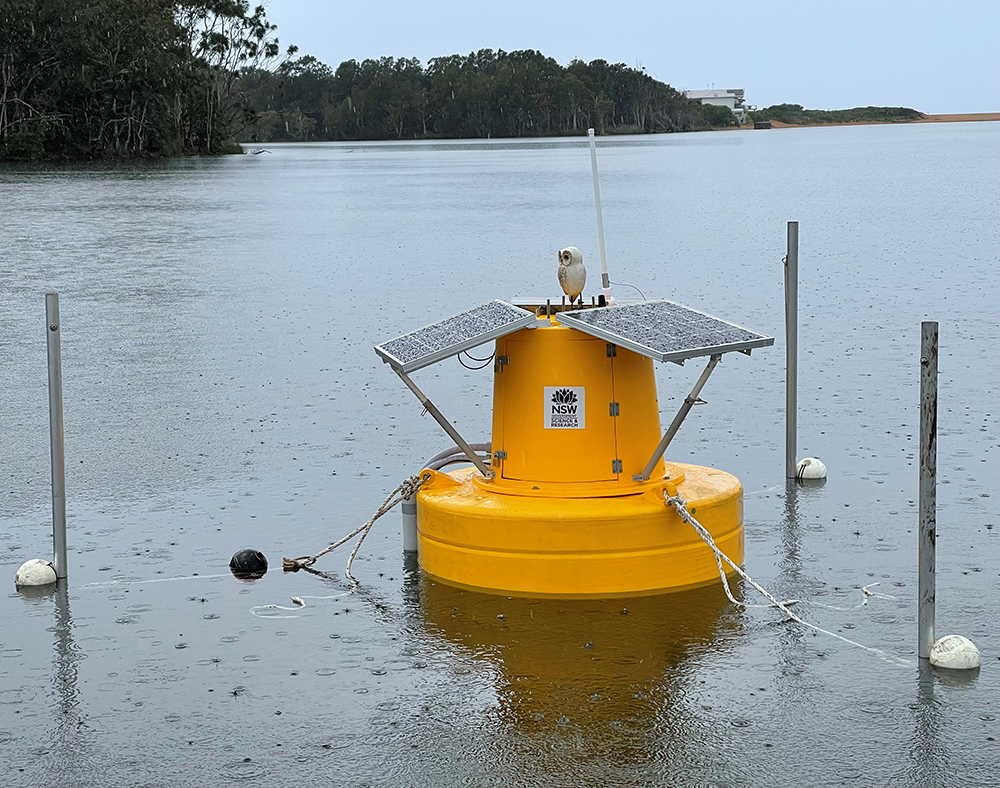Our scientists, in collaboration with researchers at the Southern Cross University, aim to lift the lid on what is driving poor water quality in Avoca Lake.
The Avoca Lake Process Study is looking at the complexities of water movements and chemical interactions, as well as how water quality in the lake changes over time.
The project was commissioned by Central Coast Council and results will guide Council in how to improve the ecological health of Avoca Lake.
Meet Beatrice
Beatrice looks like a big, lazy yellow buoy, but she is a multi-depth water quality monitoring device that samples water from the surface to the depths of Avoca Lake. The data she collects is beamed back for scientists to analyse in real time.
Beatrice is solar-powered and is located on the lake, fixed in position with an anchor to the bottom.
The data will help scientists better understand the water quality dynamics of Avoca Lake, refine their understanding of the system and improve their ability to advise on how to improve its ecological health.
It is anticipated Beatrice will remain on the go for 12 months to enable enough data to be collected over a range of seasons and conditions.
Sampling multiple depths
Water quality underpins the ecology of coastal lagoons and estuaries.
In relatively sheltered systems like Avoca Lake, water quality can vary markedly with depth due to physical, chemical and biological influences. Just like when oil sits on top of water, layers can also form within the water column of an estuary.
These water layers are based on differences in salinity, temperature, oxygen or nutrients. This layering is called stratification, and it has an important influence on how a lagoon processes pollutants from surrounding urban areas.
Beatrice is helping us understand this process by ‘sipping’ water from multiple depths in the water column. This allows us to monitor what happens in Avoca Lake after rain, drought and tides.
The samples collected will alert scientists when the lake water separates into layers, prompting the team to head out and take extra water samples by hand. These combined analyses will help us understand the impact of this layering on the interaction between sediments and nutrients in the lagoon.
What Beatrice measures
Beatrice takes measurements on a number of important parameters to help scientists understand the health of Avoca Lake. These include:
- stratification (water layers)
- dissolved oxygen
- turbidity
- salinity
- pH
- temperature
- chlorophyll a
- phycocyanin
- coloured dissolved organic matter.
Learn more about these parameters on our Real-time water quality monitoring webpage.
Contact us
For more information or to report a damaged buoy, contact us at [email protected].
